Chapter 22: Early- and Mid-Twentieth-Century Art
5.0(1)
5.0(1)
Card Sorting
1/72
Study Analytics
Name | Mastery | Learn | Test | Matching | Spaced |
|---|
No study sessions yet.
73 Terms
1
New cards
Abstract
works of art that may have form, but have little or no attempt at pictorial representation
2
New cards
Action painting
an abstract painting in which the artist drips or splatters paint onto a surface like a canvas in order to create the work
3
New cards
Assemblage
a three-dimensional work made of various materials such as wood, cloth, paper, and miscellaneous objects
4
New cards
Biomorphism
a movement stressing organic shapes that hint at natural forms
5
New cards
Cantilever
a projecting beam that is attached to a building at one end, but suspended in the air at the other
6
New cards
Collage
a composition made by pasting together different items onto a flat surface
7
New cards
Color field painting
a style of abstract painting characterized by simple shapes and monochromatic color
8
New cards
Documentary photography
a type of photography that seeks social and political redress for current issues by using photographs as a way of exposing society’s faults
9
New cards
Earthwork
a large outdoor work in which the earth itself is the medium
10
New cards
Ferroconcrete
steel reinforced concrete; the two materials act together to resist building stresses
11
New cards
Happening
an act of performance art that is intially planned but involves spontaneity, improvisation, and often audience participation
12
New cards
Harlem Renaissance
a particularly rich artistic period in the 1920s and 1930s that is named after the African-American neighborhood in New York City where it emerged.
13
New cards
Installation
a temporary work of art made up of assemblages created for a particular space, like an art gallery or a museum
14
New cards
Mobile
a sculpture made of several different items that dangle from a ceiling and can be set into motion by air currents
15
New cards
Neoplasticism
a term coined by Piet Mondrian to describe works of art that contain only primary and neutral colors and only straight, vertical, or horizontal lines intersecting at right angles
16
New cards
Photomontage
The technique of creating an image by combining photographs, sometimes with other materials, to form a unified image
17
New cards
Ready-made
a commonplace or found object selected and exhibited as a work of art
18
New cards
Silkscreen
a printing technique that passes ink or paint through a stenciled image to make multiple copies
19
New cards
Venice Biennale
a major show of contemporary art that takes place every other year in various venues throughout the city of Venice; begun in 1895
20
New cards
**Fauvism**
An art movement that debuted in 1905 at Salon d’Automne in Paris.
21
New cards
Die Brüke
formed by a group of German artists in Dresden in 1905, after being inspired by the Fauve movement in Paris.
22
New cards
Der Blaue Reiter
a group formed in Munich in Germany, 1911; they began to move towards abstraction, forsaking representational art.
23
New cards
Cubism
Art movement that originated in Pablo Picasso's studio in 1907.
24
New cards
Les Demoiselles d'Avignon
first Cubist painting
25
New cards
Analytical
The \_____ phase of Cubism (1907-1912) was highly experimental and featured jagged edges and multifaceted lines.
26
New cards
Synthetic
The \_______ Cubism (after 1912) was inspired by collages and found objects and featured flattened forms.
27
New cards
Curvilinear
The \______ Cubism (in the 1930s) was a more flowing, rounded response to the flattened forms of Synthetic Cubism.
28
New cards
Gallery 291
the most progressive gallery in the United States, showcasing photographs as works of art beside avant-garde European paintings and modern American works.
29
New cards
Dada
It is a word that means "hobby horse" and refers to an art movement that existed from 1916 to 1925 in various cities.
30
New cards
World War I
Dadaists were disillusioned by the pointlessness of \_____ and rejected traditional art methods and exhibitions.
31
New cards
Surrealists
they were influenced by the psychological studies of Freud and Jung and aimed to represent the unseen world of dreams, subconscious thoughts, and unspoken communication.
32
New cards
Andre Breton
The surrealism movement started with the theories of \______ in 1924 and went in two directions
33
New cards
Constructivists
They were known for experimenting with new architectural materials and assembling them in a way that lacked historical reference.
34
New cards
De Stijl
paintings of this movement are completely abstract, with titles that don't reference nature, and are painted on a white background with black lines shaping rectangular spaces.
35
New cards
Prairie School of architecture
refers to a group of architects who worked in Chicago from 1900 to 1917, with Frank Lloyd Wright being the most famous.
36
New cards
Cantilever
\________ construction was used by Wright to extend porches and terraces from the main structure, giving the impression of weightless anchors holding up forms hovering over open space.
37
New cards
International Style
It is greatly influenced by the streamlined qualities of the Bauhaus. The style celebrates the clean, spacious, white lines of a building's façade.
38
New cards
Mexican Muralists
These didactic paintings feature a clear message that is presented in an easy-to-read format. The topics mainly support labor and working-class struggle, and they usually have a socialist goal.
39
New cards
Abstract Expressionism
Sometimes called The New York School. It developed as a reaction against artists like Mondrian, who took the Minimalist approach to abstraction.
40
New cards
Color field painting
It relies on subtle tonal values that are often variations of a monochromatic hue.
41
New cards
Pop Art
It uses materials from everyday life, such as consumer goods and famous singers. glorifies the commonplace and brings attention to everyday reality.
42
New cards
Site Art
Sometimes called Earth Art; it is dependent on its location to render full meaning.
43
New cards
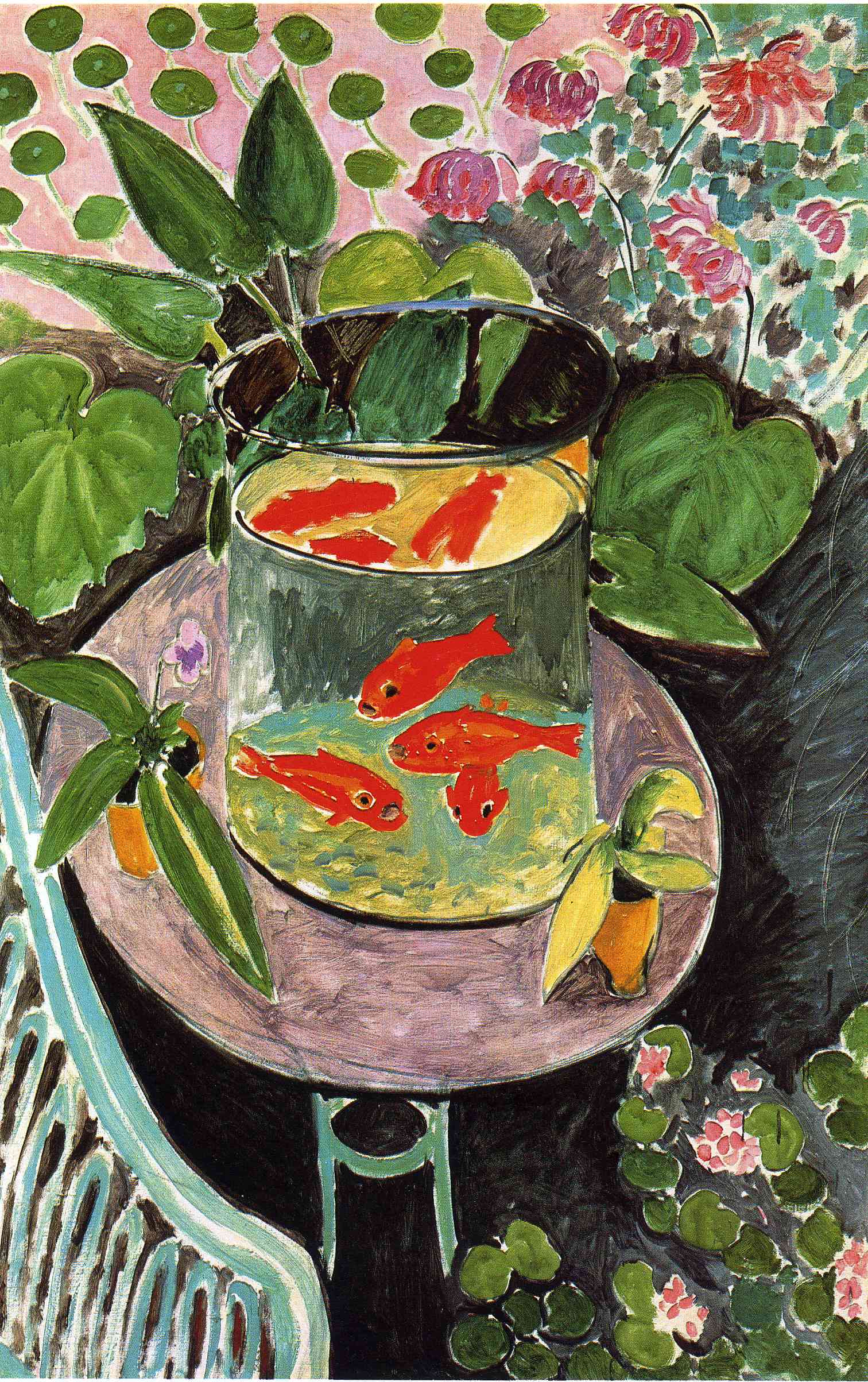
Gold Fish
* By Henri Matisse (1912)
* Still-life painting.
* Admired the relaxed and contemplative lifestyle of the Moroccans
* Strong contrasts of color.
* Still-life painting.
* Admired the relaxed and contemplative lifestyle of the Moroccans
* Strong contrasts of color.
44
New cards
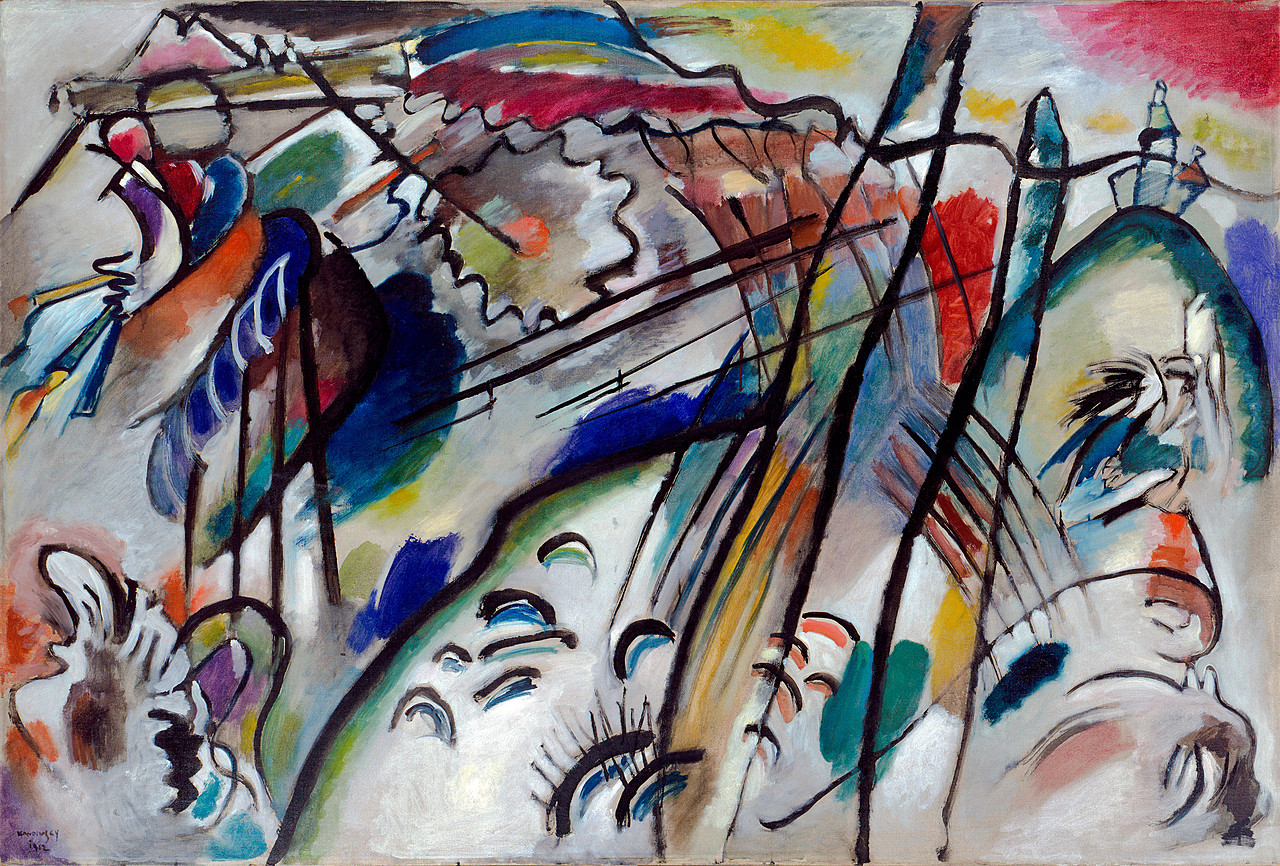
Improvisation 28 (2nd Version)
* By Vassily Kandinsky (1912)
* Kandinsky depicts cataclysmic events and a sense of spiritual salvation.
* Kandinsky’s works have a relationship to atonal music, which was evolving at this time.
* Kandinsky depicts cataclysmic events and a sense of spiritual salvation.
* Kandinsky’s works have a relationship to atonal music, which was evolving at this time.
45
New cards
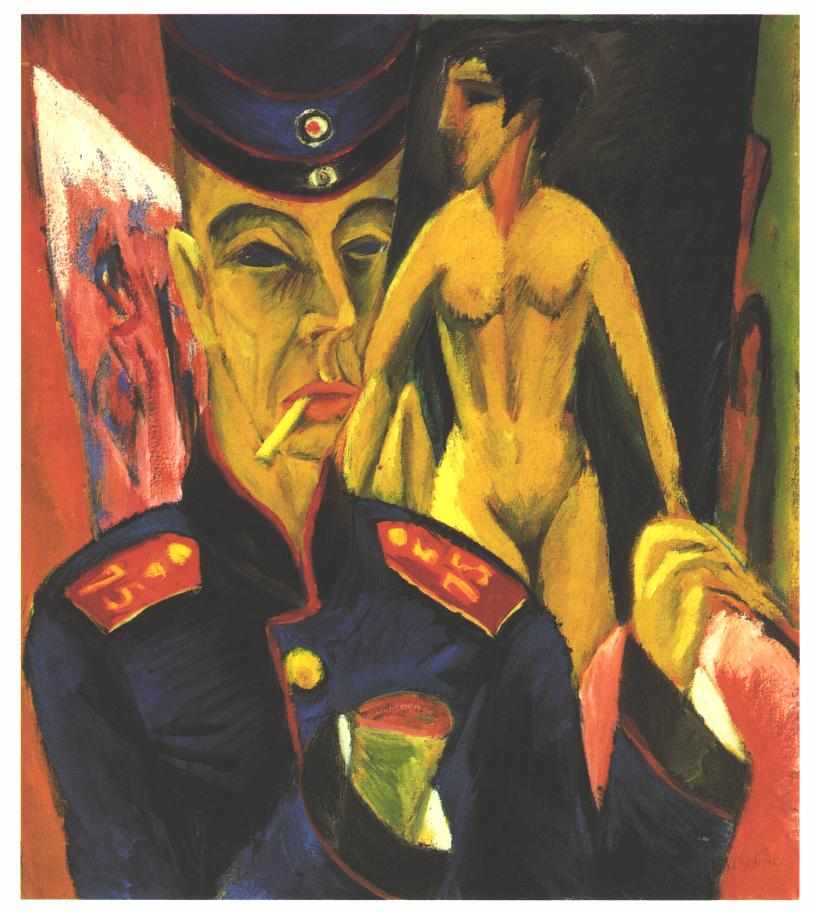
Self-Portrait as a Soldier
* By Ernst Ludwig Kirchner (**1915**)
* Main figure has a drawn face, with a cigarette hanging loosely from his lips.
* He is wearing the uniform of his field artillery regiment.
* Main figure has a drawn face, with a cigarette hanging loosely from his lips.
* He is wearing the uniform of his field artillery regiment.
46
New cards
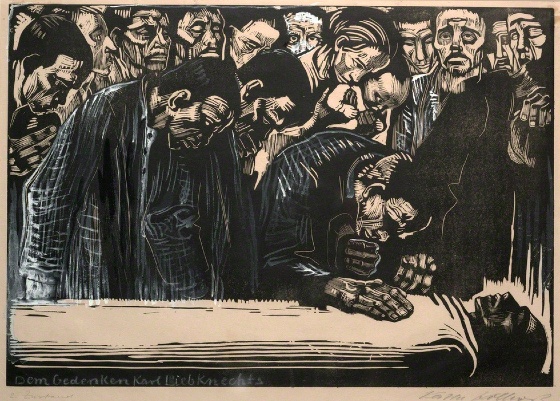
Memorial Sheet for Karl Liebknecht
* By Käthe Kollwitz (1919–1920)
* Wood-block print.
* Stark black and white of the woodcut used to magnify the grief.
* Wood-block print.
* Stark black and white of the woodcut used to magnify the grief.
47
New cards
Berlin Spartacus League
Liebknecht was among the founders of the _____, which became the German Communist Party.
48
New cards
Spartacus Revolt
In 1919, Liebknecht was shot to death during a Communist uprising in Berlin called the _____ (named for the slave who led a revolt against the Romans in 73 B.C.E.).
49
New cards
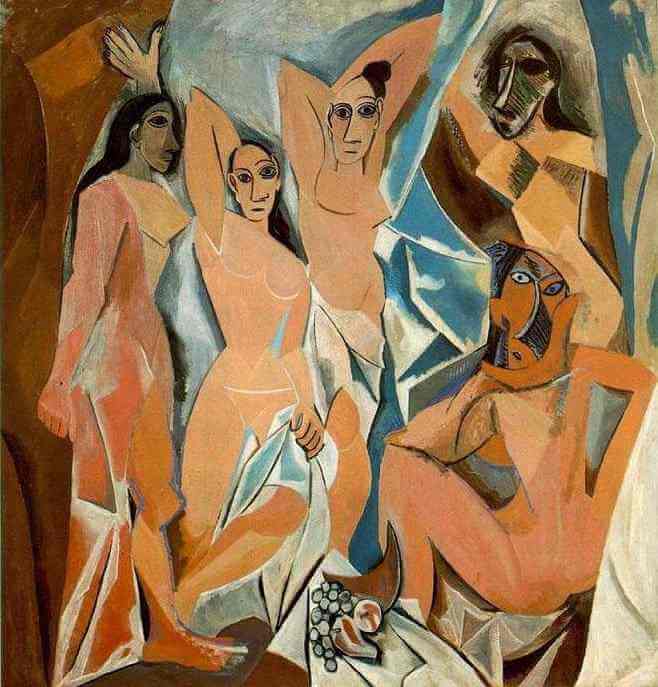
Les Demoiselles d’Avignon
* By Pablo Picasso (1907)
* Depicts five prostitutes in a bordello in Avignon Street in Barcelona, each posing for a customer.
* This is the first cubist work, influenced by late Cézanne and perhaps African masks
* Depicts five prostitutes in a bordello in Avignon Street in Barcelona, each posing for a customer.
* This is the first cubist work, influenced by late Cézanne and perhaps African masks
50
New cards
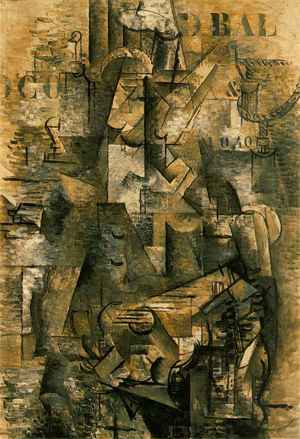
The Portuguese
* By Georges Braque (1911)
* Clear-edged surfaces at the front of the picture plane, not recessed in space.
* Analytical Cubism; An exploration of shapes
* Clear-edged surfaces at the front of the picture plane, not recessed in space.
* Analytical Cubism; An exploration of shapes
51
New cards
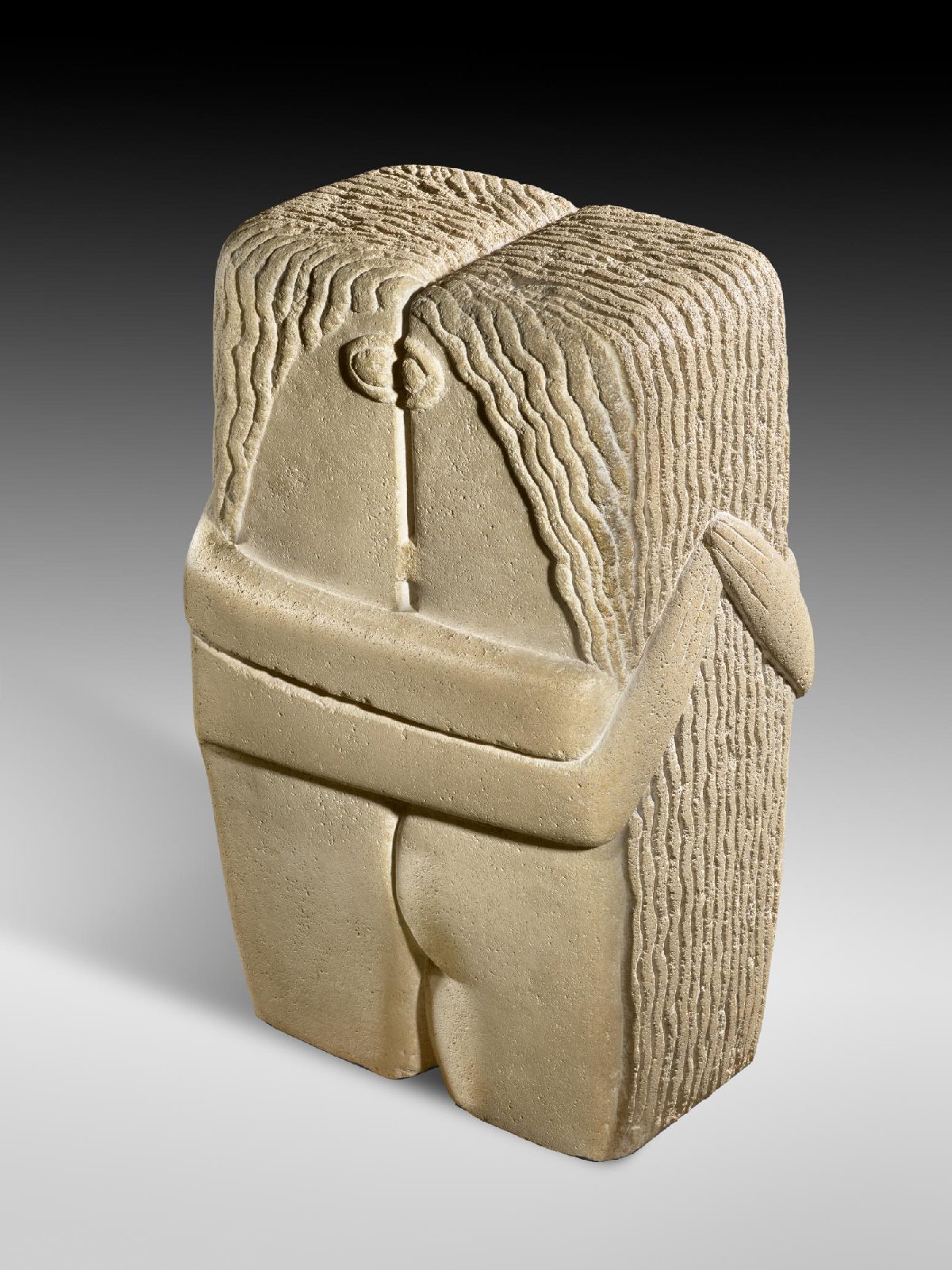
The Kiss
* By Constantin Brancusi (1907–1908)
* Symbolic, almost Cubist rendering of the male and female bodies.
* Requested by John Quinn
* This is the fourth stone version of this subject
* Symbolic, almost Cubist rendering of the male and female bodies.
* Requested by John Quinn
* This is the fourth stone version of this subject
52
New cards
Steerage
the part of a ship reserved for passengers with the cheapest tickets.
53
New cards
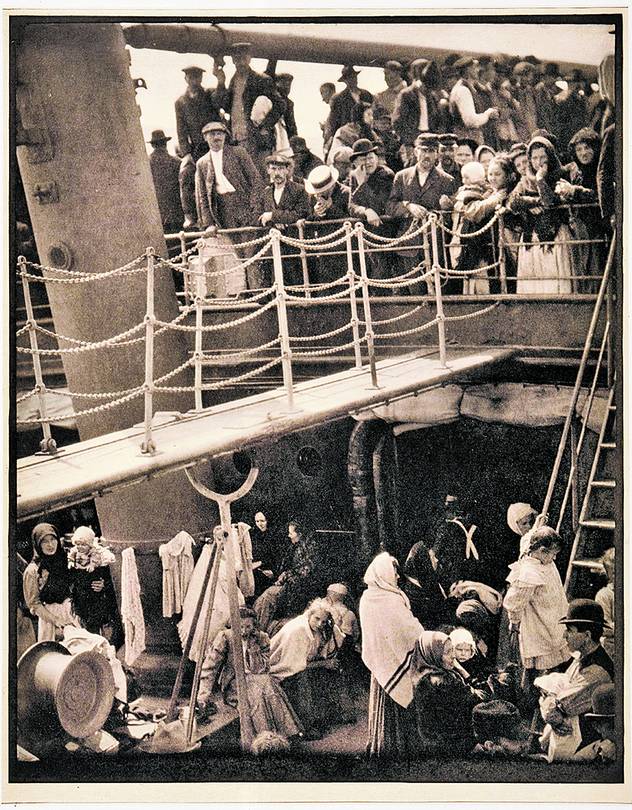
The Steerage
* By Alfred Stieglitz (1907)
* Depicts the poorest passengers on a ship traveling from the United States to Europe in 1907
* Published in October 1911 in Camera Work.
* Depicts the poorest passengers on a ship traveling from the United States to Europe in 1907
* Published in October 1911 in Camera Work.
54
New cards
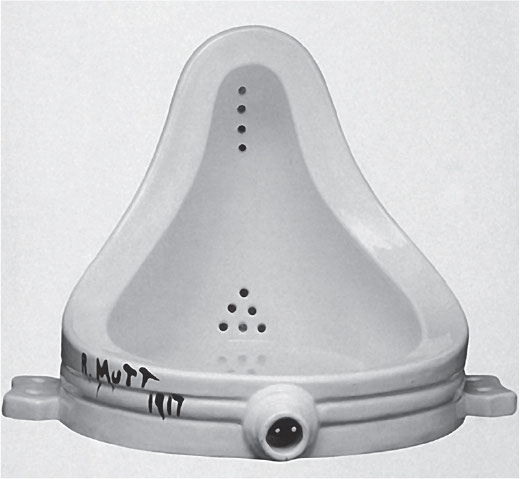
Fountain
* By Marcel Duchamp (1917/1950)
* readymade glazed sanitary china with black paint
* an experimental replay by Duchamp, testing the commitment of the new American Society to freedom of expression and tolerance of new conceptions about art.
* readymade glazed sanitary china with black paint
* an experimental replay by Duchamp, testing the commitment of the new American Society to freedom of expression and tolerance of new conceptions about art.
55
New cards
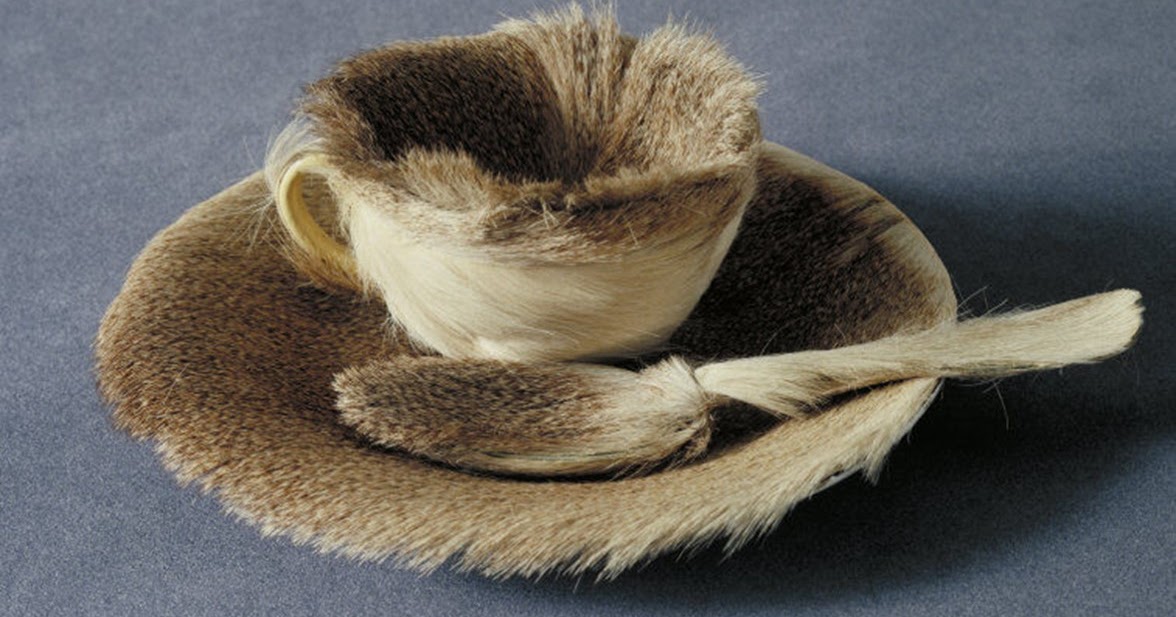
Object (Le Dejéuner en fourrure)
* By Meret Oppenheim (1936)
* Combination of unalike objects: fur-covered teacup, saucer, and spoon.
* A contrast of textures
* Combination of unalike objects: fur-covered teacup, saucer, and spoon.
* A contrast of textures
56
New cards
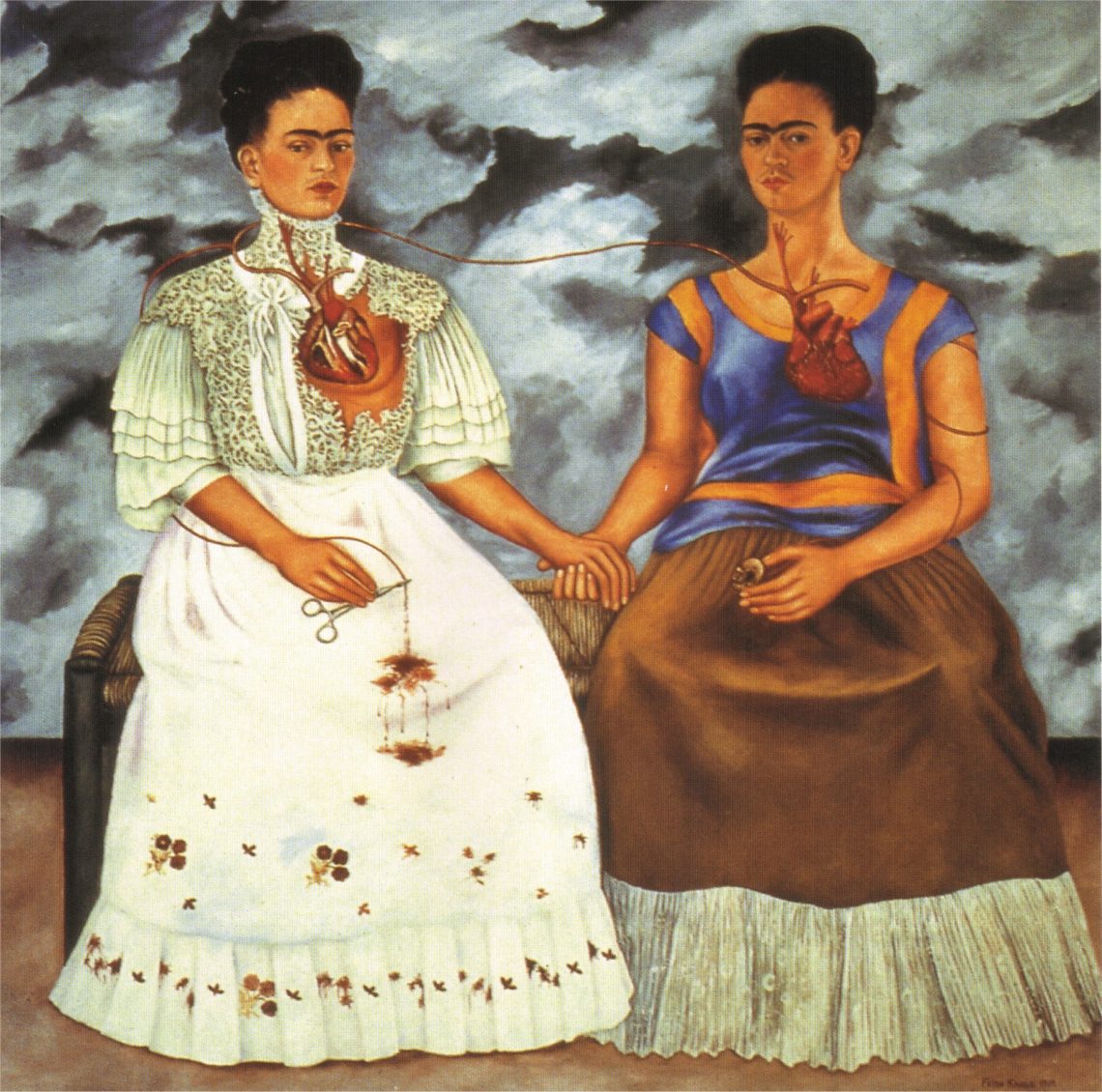
The Two Fridas
* By Frida Kahlo (1939)
* Two hearts are joined together by veins that are cut by scissors at one end and lead to a portrait of her husband
* Blood on her lap suggests many abortions and miscarriages
* Two hearts are joined together by veins that are cut by scissors at one end and lead to a portrait of her husband
* Blood on her lap suggests many abortions and miscarriages
57
New cards

The Jungle
* By Wifredo Lam (1943)
* Crescent-shaped faces suggest African masks and the god Elegua.
* The work addresses the history of slavery in colonial Cuba.
* This work was “intended to communicate a psychic state.”
* Crescent-shaped faces suggest African masks and the god Elegua.
* The work addresses the history of slavery in colonial Cuba.
* This work was “intended to communicate a psychic state.”
58
New cards
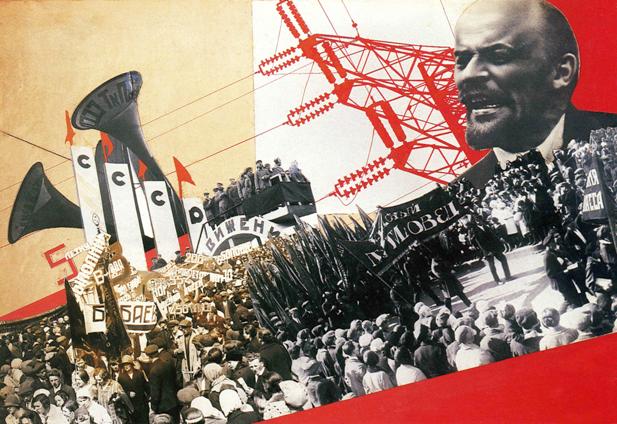
Illustration from The Results of the First Five-Year Plan
* By Varvara Stepanova (1932)
* Graphic art for political and propaganda purposes; a photomontage.
* Illustrates Five-Year Plan
* Influenced by Cubism and Futurism.
* Graphic art for political and propaganda purposes; a photomontage.
* Illustrates Five-Year Plan
* Influenced by Cubism and Futurism.
59
New cards
Five-Year Plan
* Soviet practice of increasing agricultural and industrial output in five years.
* Launched in 1928, considered complete in 1932.
* Launched in 1928, considered complete in 1932.
60
New cards
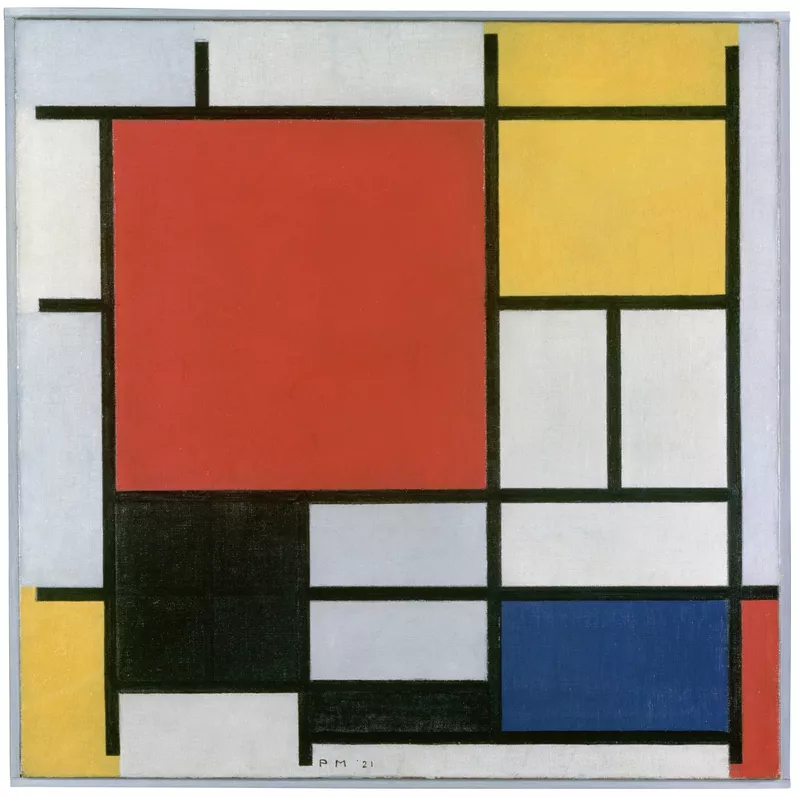
Composition with Red, Blue and Yellow
* By Piet Mondrian (1930)
* Only primary colors used—red, yellow, and blue—plus the neutral colors, white and black.
* The artist is interested in the material properties of paint, not naturalistic depictions.
* Only primary colors used—red, yellow, and blue—plus the neutral colors, white and black.
* The artist is interested in the material properties of paint, not naturalistic depictions.
61
New cards

Fallingwater
* By Frank Lloyd Wright (1936–1939)
* contains a glass curtain wall around three of the four sides; the building embraces the woods around it.
* the floor and the walls of building are made from the stone of the area.
* Cantilevered steel-supported porches extend over a waterfall.
* contains a glass curtain wall around three of the four sides; the building embraces the woods around it.
* the floor and the walls of building are made from the stone of the area.
* Cantilevered steel-supported porches extend over a waterfall.
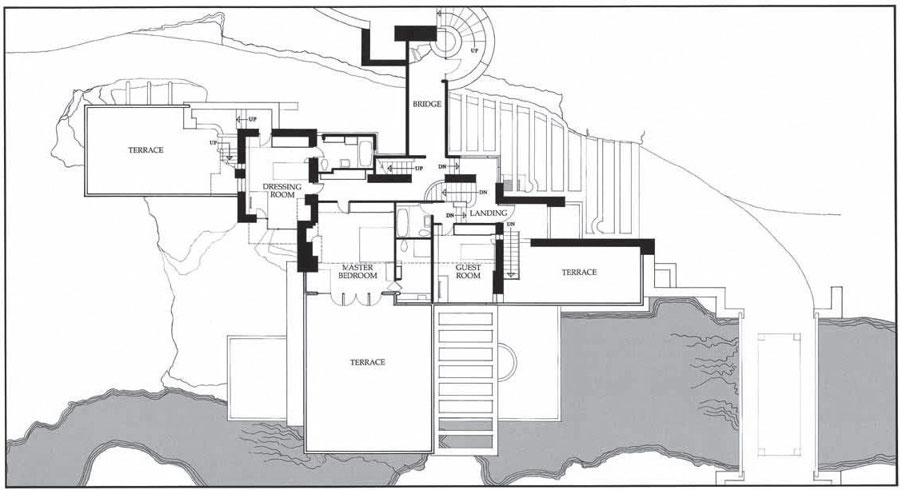
62
New cards
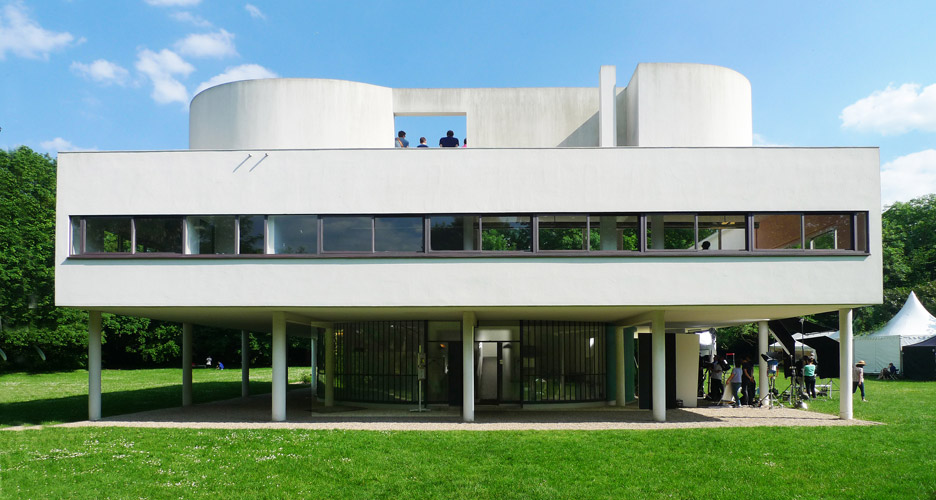
Villa Savoye
* By Le Corbusier (1929)
* Boxlike horizontal quality; an abstraction of a house.
* A three-bedroom country house with servants’ quarters on the ground floor.
* Built in suburban Paris as a retreat for the wealthy.
* Boxlike horizontal quality; an abstraction of a house.
* A three-bedroom country house with servants’ quarters on the ground floor.
* Built in suburban Paris as a retreat for the wealthy.
63
New cards
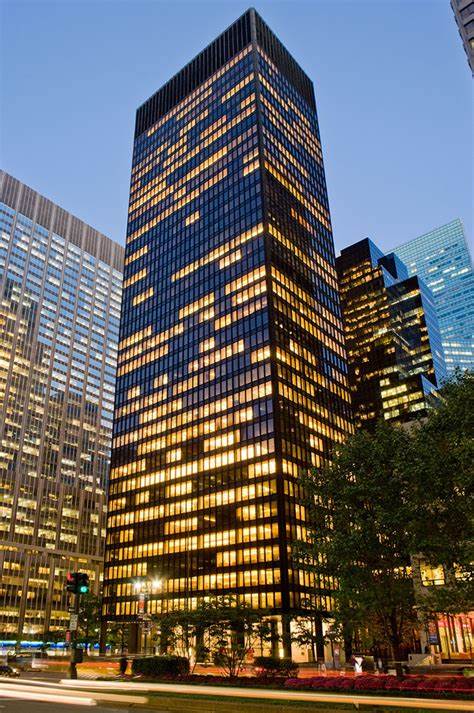
Seagram Building
* By Ludwig Mies van der Rohe and Philip Johnson (1954–1958)
* 38-story corporate headquarters of the Seagram Liquor Company.
* Minimalist architecture.
* A triumph of the International Style of architecture.
* 38-story corporate headquarters of the Seagram Liquor Company.
* Minimalist architecture.
* A triumph of the International Style of architecture.
64
New cards
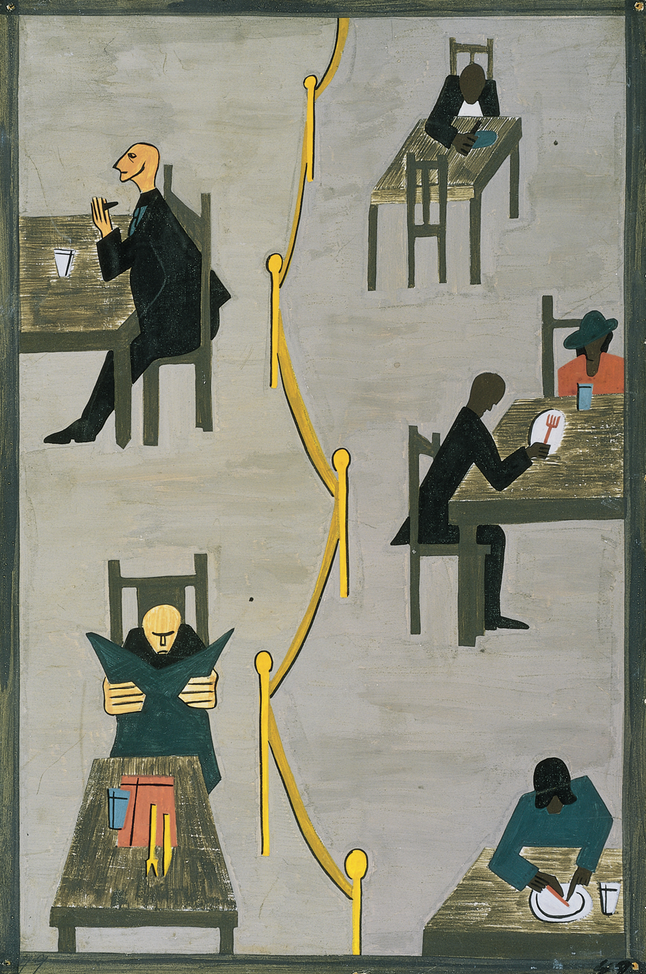
The Migration of the Negro, Panel no. 49
* By Jacob Lawrence (1940–1941)
* The work illustrates the collective African-American experience; therefore, there is little individuality in the figures.
* Negroes escaping the economic privation of the South.
* The work illustrates the collective African-American experience; therefore, there is little individuality in the figures.
* Negroes escaping the economic privation of the South.
65
New cards

Dream of a Sunday Afternoon in the Alameda Park
* By Diego Rivera (1947–1948)
* 50-foot-long fresco, 13 feet high.
* Three eras of Mexican history depicted from left to right
* Depicts a who’s who of Mexican politics, culture, and leadership
* 50-foot-long fresco, 13 feet high.
* Three eras of Mexican history depicted from left to right
* Depicts a who’s who of Mexican politics, culture, and leadership
66
New cards
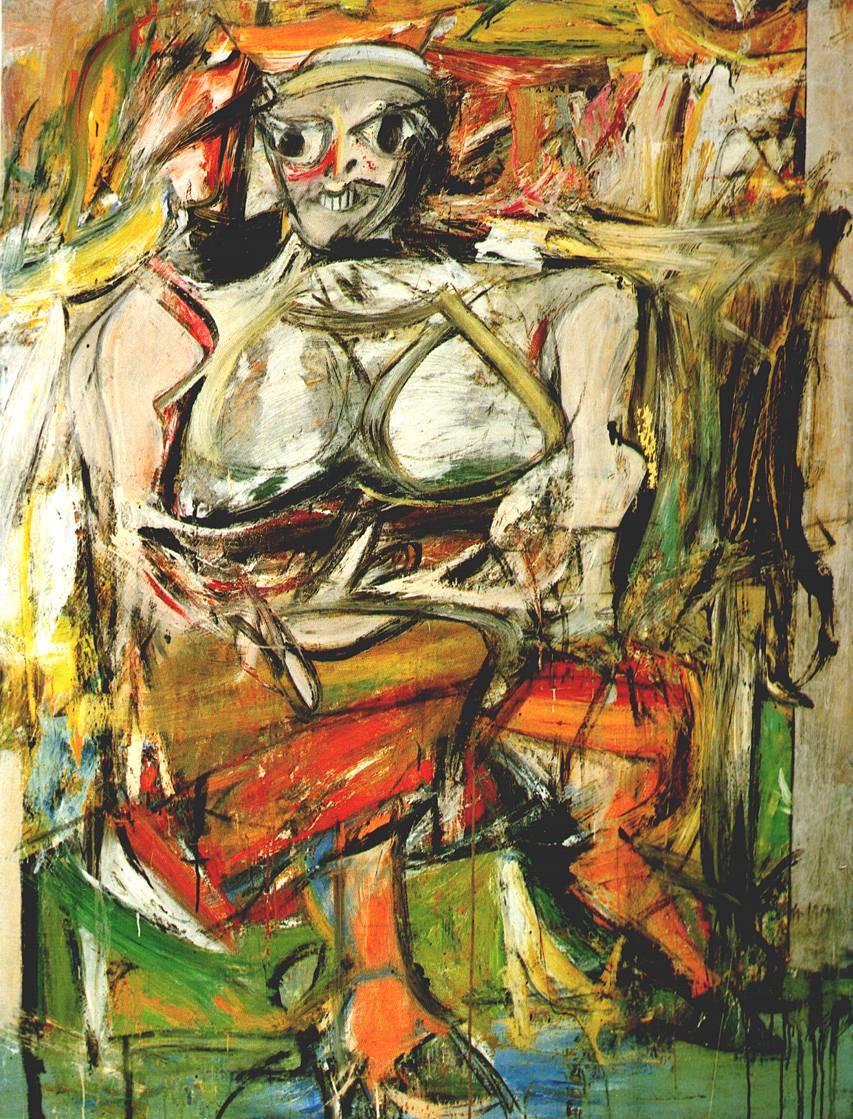
Woman I
* By Willem de Kooning (1950–1952)
* Ferocious woman with great fierce teeth and huge eyes.
* Combination of stereotypes
* Influenced by everything from paleolithic goddesses to pin-up girls.
* Ferocious woman with great fierce teeth and huge eyes.
* Combination of stereotypes
* Influenced by everything from paleolithic goddesses to pin-up girls.
67
New cards
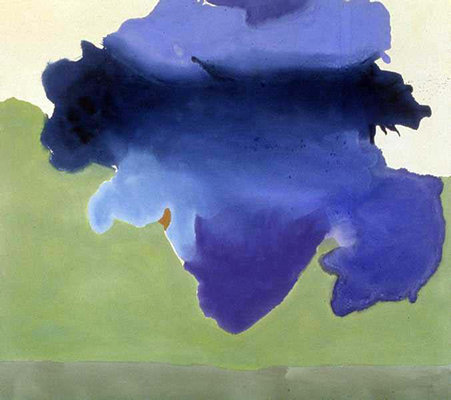
The Bay
* By Helen Frankenthaler (1963)
* Painted directly on an unprimed canvas; canvas absorbs the paint more directly.
* Use of landscape as a starting point, a basis for imagery in the works.
* Painted directly on an unprimed canvas; canvas absorbs the paint more directly.
* Use of landscape as a starting point, a basis for imagery in the works.
68
New cards

Marilyn Diptych
* By Andy Warhol (1962)
* The public face appears sequentially as if on a roll of film.
* Fifty images from a film still from a movie, Niagara
* public face appears highlighted by bold, artificial colors.
* The public face appears sequentially as if on a roll of film.
* Fifty images from a film still from a movie, Niagara
* public face appears highlighted by bold, artificial colors.
69
New cards
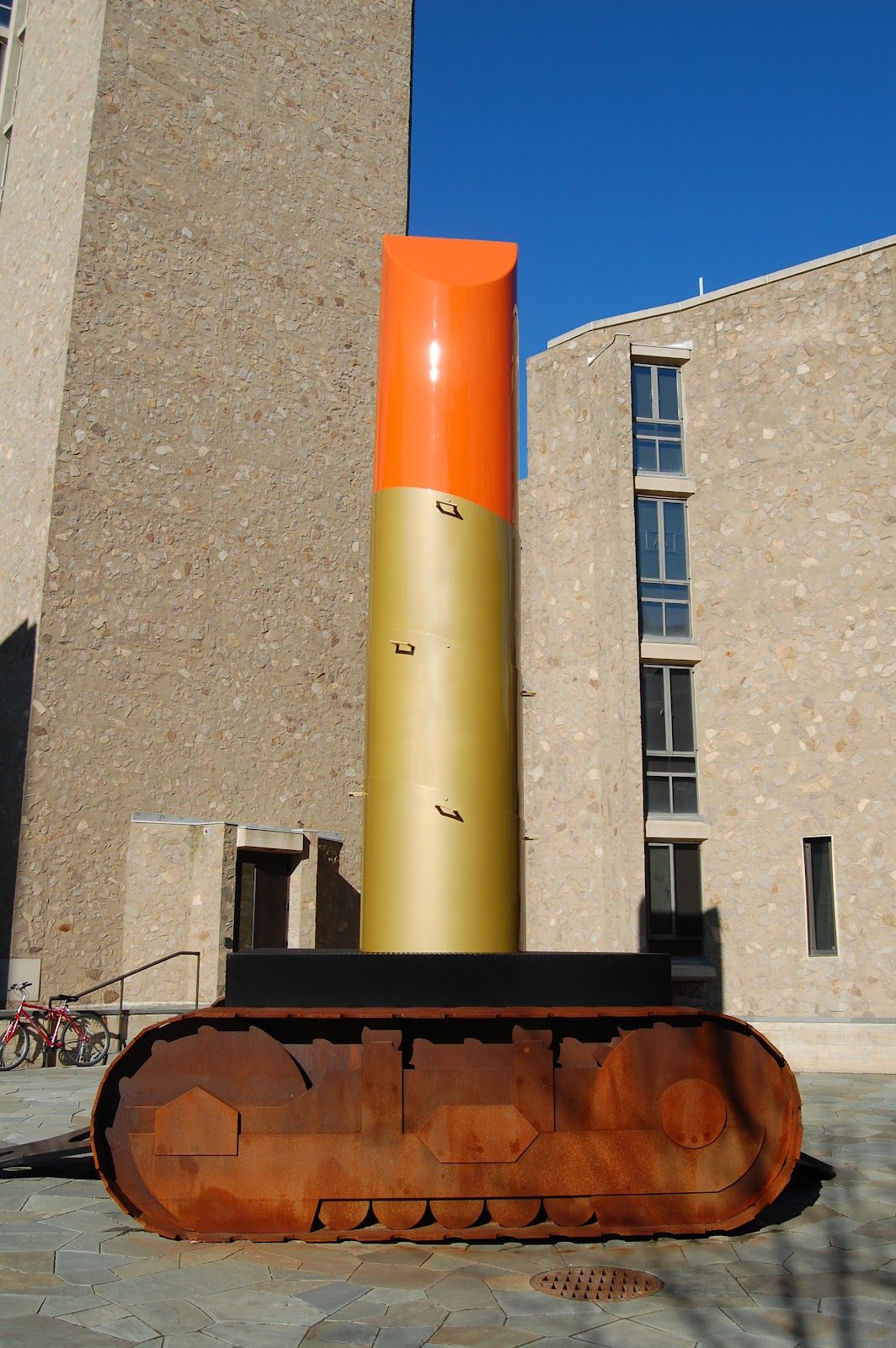
Lipstick (Ascending) on Caterpillar Tracks
* By Claes Oldenburg (1969–1974)
* Intended as a platform for public speakers; rallying point for anti-Vietnam-era protests.
* antiwar symbolism
* themes of death, power, desire, and sensuality.
* Intended as a platform for public speakers; rallying point for anti-Vietnam-era protests.
* antiwar symbolism
* themes of death, power, desire, and sensuality.
70
New cards
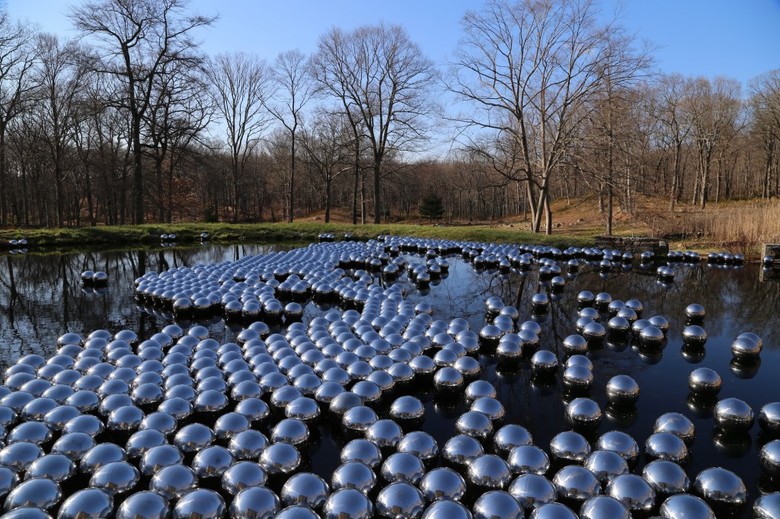
Narcissus Garden
* By Yayoi Kusama (1966)
* The viewer is reflected seemingly into infinity in the mirrored surfaces.
* The installation later moved to water, where the floating balls reflect the natural environment
* The viewer is reflected seemingly into infinity in the mirrored surfaces.
* The installation later moved to water, where the floating balls reflect the natural environment
71
New cards

Spiral Jetty
* By Robert Smithson (1970)
* A coil of rock placed in a part of the Great Salt Lake that is in an extremely remote and inaccessible area.
* A coil of rock placed in a part of the Great Salt Lake that is in an extremely remote and inaccessible area.
72
New cards
Jetty
It is usually a pier extending into the water; here it is transformed into a curl of rocks sitting silently in a vast, empty wilderness.
73
New cards
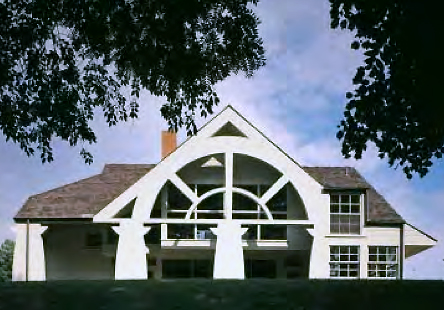
House in New Castle County
* By Robert Venturi, John Rauch, and Denise Scott Brown (1978–1983)
* The house was designed for a family of three.
* Rural location in low hills, grassy fields of Delaware.
* The house was designed for a family of three.
* Rural location in low hills, grassy fields of Delaware.